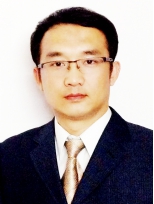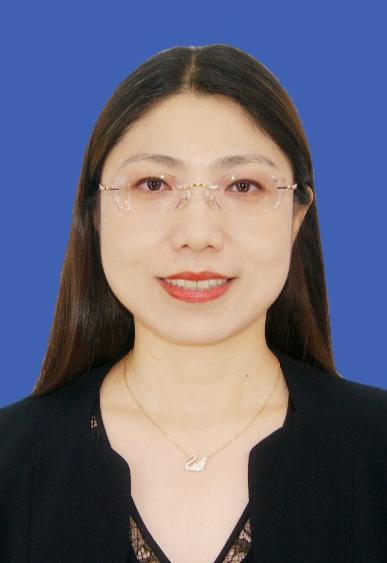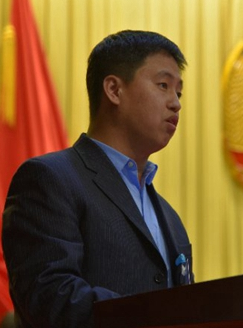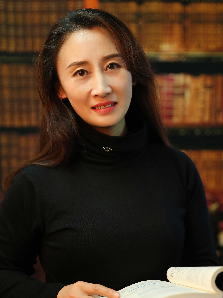| Prof. Guangfeng Shi (Dean)Changchun University of Science and Technology Senior Member of the Chinese Mechanical Engineering Society; Young Expert of the Fluid Control Committee of the Chinese Society of Mechanics; Secretary of the Chinese Engineering Education Professional Certification Association; Director of the Professional Committee of the Association of Young Science and Technology Workers of Jilin Province; Reviewer for the China Postdoctoral Science Foundation; National Graduate Education Evaluation and Monitoring Expert; Review Expert for the National Natural Science Foundation and Project Reviewer for the Jilin Provincial Department of Science and Technology; Reviewer for the Changchun Youth Scientific and Technological Innovation Competition. Title: Applications of Optical Imaging and Machine Vision in Detection Technology Abstract:The content first introduces the fundamental principles and methodologies of optical imaging and machine vision inspection. It then presents practical applications in detection technology by integrating the author's research experiences with specific case studies, including: acoustic resonance liquid zoom lens-based shape imaging, optical diffraction-based tool alignment detection, image-based intelligent inspection of stamped hole quality, 3D scanning and reconstruction of diamond rough surface topography, and intelligent detection of surface defects in flywheel disc steel plates. Finally, it summarizes the developmental characteristics and future challenges of these technologies. |
| Prof. Shuang Zhang (Dean)Changchun Institute of Technology Member of the Manufacturing Technology Committee of the Chinese Society of Automation at Changchun Engineering Institute; Member of the Young Editorial Board of Automation in Manufacturing; Director of the Jilin Province Additive Manufacturing Society. Former Director of the Intelligent Manufacturing Technology Innovation Center for High-End Equipment in Jilin Province. Research Interests: Intelligent detection and system integration technology. Title: Research and Application of Key Technologies for On-line Inspection of Manufacturing Quality of Key Parts of High-speed Rail Abstract: With the advent of the Fourth Industrial Revolution, global economic and social development is facing new opportunities and challenges. Among them, intelligent testing equipment, as the core equipment of intelligent manufacturing and supporting the construction of manufacturing power, quality power, and digital China, is of great significance. High-end equipment of large parts and components geometry measurement and control is the basis of ensuring product quality delivery of the aircraft, rockets, satellites, high-speed rail, new energy vehicles and other high-end equipment manufacturing. The geometry measurement of the large parts and components manufacturing process has high requirements. How to use different large-size measurement technologies combined with different carrier execution technologies to achieve the goal of high-precision, high-efficiency, wide-range, automated and intelligent measurement of large parts geometry has become a factor that must be considered in the construction and development of large-size measurement systems for large parts of high-end equipment. This report focuses on the research and application of key technologies for online inspection of manufacturing quality of key components of high-speed railways. Taking the bogie and wheelset inspection of high-speed rail core components as an example, it elaborates on the application of machine vision technology in the manufacturing process of large parts and components of high-end equipment represented by high-speed rail, as well as the popularization and application of related technology in other fields. The final realization, around the large parts online automated detection and integration technology, overcomes core technical problems of local enterprises, and then supports and serves the high-quality development of Jilin's equipment manufacturing industry. |
| Prof. Hongchang Ding (ViceDean)Changchun University of Science and Technology Top Innovative Talent of Jilin Province Title: The application of artificial intelligence in modern industrial production lines Abstract:Artificial intelligence (AI) is profoundly reshaping modern industrial production lines and promoting the transformation of manufacturing towards intelligence and efficiency. The breakthrough of AI technology and the transformation and upgrading of the manufacturing industry are gradually resonating, and concurrently, the policy support for "artificial intelligence" in various countries is accelerating the implementation of technology. AI is data-driven to achieve industrial parameter optimisation and path planning, and multimodal technology integration has become the core of current industrial technology. In industrial back-end applications, AI-driven dynamic allocation of resources, logistics output planning, intelligent warehousing, and warehouse management systems have gradually replaced manual labour, contributing to the reduction of costs and the increase of efficiency for enterprises. China's future trend in the field of artificial intelligence focuses on the in-depth integration of technologies: humanoid robot collaboration, digital twin real-time optimisation of production lines, and the need to address challenges such as data security and standardisation. AI not only enhances production efficiency but also reconstructs the manufacturing value chain, laying the core foundation for the era of 'intelligent manufacturing'. |
| Assoc. Prof. Lina WangChangchun University of Science and Technology Lina Wang is engaged in the scientific research of multimodal remote sensing image alignment and fusion, and has published 7 academic papers in SCI/EI journals, 4 patents, and participated in 1 top-level project of National Natural Science Foundation of China. Facing the problem of insufficient stability and robustness in multimodal image matching, the applicant proposed a descriptor construction method based on 3D global structural features, which effectively enhances the uniqueness of feature descriptors. In addition, a structural feature descriptor construction method based on phase consistency is also proposed, which can effectively resist the radiometric differences and noise effects between images and realize high-precision optical and SAR image alignment. Title: Research on the technology of optical and SAR remote sensing images Abstract: Optical images offer advantages such as high resolution, intuitive visualization, and ease of interpretation. Synthetic Aperture Radar (SAR), with its strong penetration capability, can operate effectively in all-day and all-weather conditions. Combining image information from both modalities enables maximum acquisition of ground object features in target scenarios, finding extensive applications in both military and civilian domains. Stable and reliable high-precision image registration technology serves as the key to realizing multimodal imaging applications. However, challenges such as speckle noise, radiometric differences, and geometric disparities between optical and SAR images significantly impact the accuracy, efficiency, and robustness of registration algorithms. To address these issues, this study proposes three novel optical and SAR image matching approaches from distinct perspectives: A SAR-optical matching algorithm based on nonlinear diffusion filtering and improved SIFT; a fast airborne visible-SAR image registration framework; a robust optical-SAR matching algorithm utilizing UMPC-Harris detector and HOMSI local feature descriptor. Experimental results demonstrate that these three methods respectively excel in feature repeatability, real-time performance, and robustness to radiometric differences, achieving significantly improved matching accuracy. This research provides reliable technical support for multi-source remote sensing fusion. |




